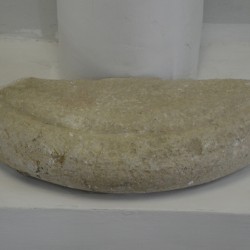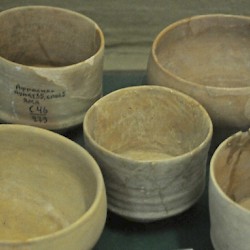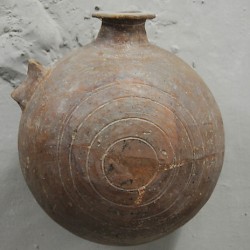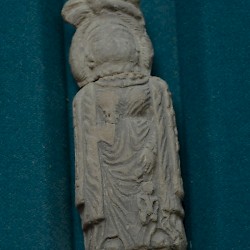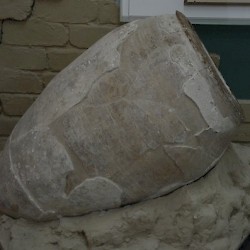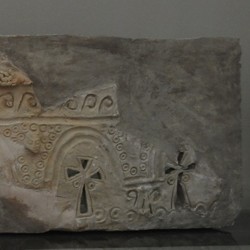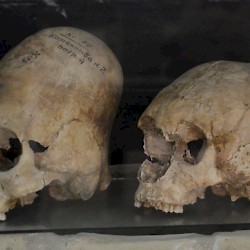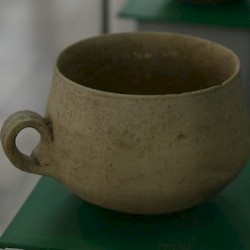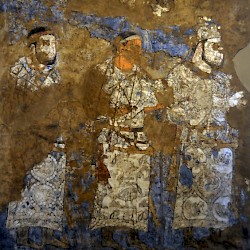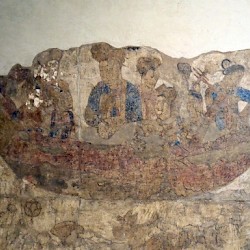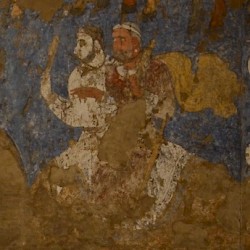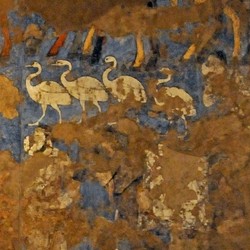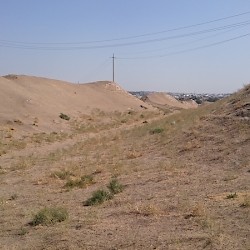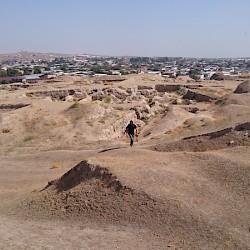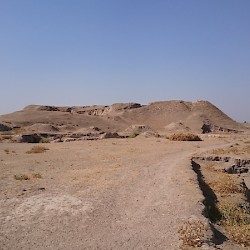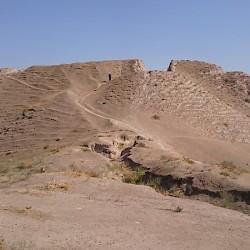Maracanda
Q71551800Maracanda: ancient name of Samarkand.
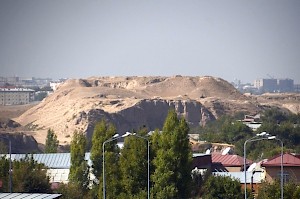
Situated on the banks of the river Saravšan, Maracanda was an old city. Archaeological discoveries suggest that it was already occupied in the fourteenth century BCE. Remains at the Qala ye Afrasiab (Castle of Afrasiabnote) date back to the Iron Age.
In the sixth century BCE, the Persian king Cyrus the Great (r.559-530) seems to have conquered Maracanda. His successor Darius I the Great (r.522-486), who organized the Achaemenid Empire, may have made it the capital of the satrapy Sogdia.
During excavations of a Medieval mosque, the remains of an ancient temple of the Sogdians were found. Hardly anything is known about this period, although it is likely that Maracanda was sometimes visited by travelers who arrived from Babylonia, Assyria, and Persia, and was also visited by people who came all the way from China. (Their route was to become famous as the Silk Road.)
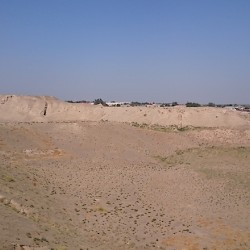 Afrosiab, Ruin of a wall |
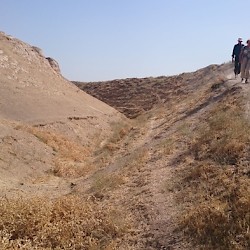 Afrosiab, Ditch |
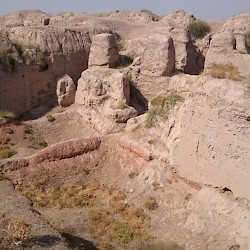 Afrosiab, Ruin of a palace |
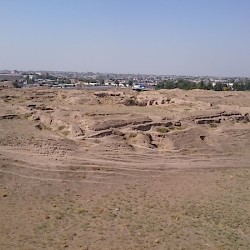 Afrosiab, Ruin of a palace |
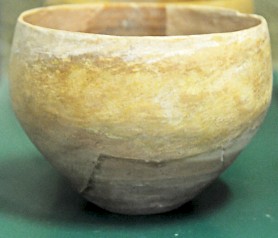
Two centuries after the beginning of the Persian occupation of Maracanda, the Macedonian king Alexander the Great conquered the Achaemenid Empire. Between 329 and 327, he used Maracanda as his base for expeditions in the region. The Qala ye Afrasiab must have been the place where he celebrated famous drinking parties, and it was during one of those occasions that he accidentally killed his commander-in-chief Clitus.
After Alexander's death, Maracanda lost its status as satrapal capital. In the Seleucid Empire, Sogdia was part of the satrapy Bactria. The city now disappears from our sources. This is a bit strange, because in about 130 BCE, the Chinese authorities started an active policy to open the Silk Road. The route flourished until the third century CE. We would have expected Maracanda to play a role of some importance, but if it did, it was not noticed by the historians. Still, we can be confident that the city was occupied. In the fourth century CE, it had become a center of (Nestorian) Christianity.
When the Silk Road was reopened by the emperors of the T'ang dynasty (618-907), Maracanda was one of its most important stations. Beautiful frescoes, found in a palace, prove the city's wealth in the intermezzo after the fall of the Sasanian Empire and before the Arab conquest.
Until 711, it was a treasured possession of the khan of the Western Turks; in that year, it was conquered by the Arabs. The eighth century was a period of great splendor; Samarkand, as it was now called, became one of the most important cultural centers of the Islamic world.
